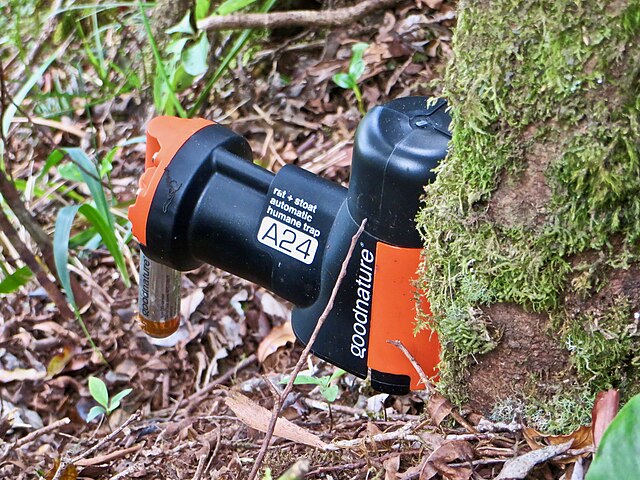The stoat was introduced into New Zealand to control introduced rabbits and hares, but is now a major threat to the native bird population. The natural range of the stoat is limited to parts of the Northern Hemisphere. Immediately before human settlement, New Zealand did not have any land-based mammals apart from bats, but Polynesian and European settlers introduced a wide variety of animals. Rarely, in Southland, the fur of stoats has been reported to turn white, being the fur known as ermine, which adorns royal robes.
A stoat in the Ardennes in Belgium, within its natural range
self-resetting rat and stoat trap
Stoat emerging from a bird nesting box, near Raglan
Stoat caught in a trap as part of a predator control initiative at the White Heron Sanctuary at the Waitangiroto Nature Reserve in Whataroa.
The stoat, also known as the Eurasian ermine, Beringian ermine and ermine, is a mustelid native to Eurasia and the northern regions of North America. Because of its wide circumpolar distribution, it is listed as Least Concern on the IUCN Red List. It was introduced into New Zealand in the late 19th century to control rabbits, but had a devastating effect on native bird populations and was nominated as one of the world's top 100 "worst invaders".
Stoat
Skull
Stoat (left) and least weasel (right) pelts—note the stoat's larger size and black tail-tip
Skeleton








